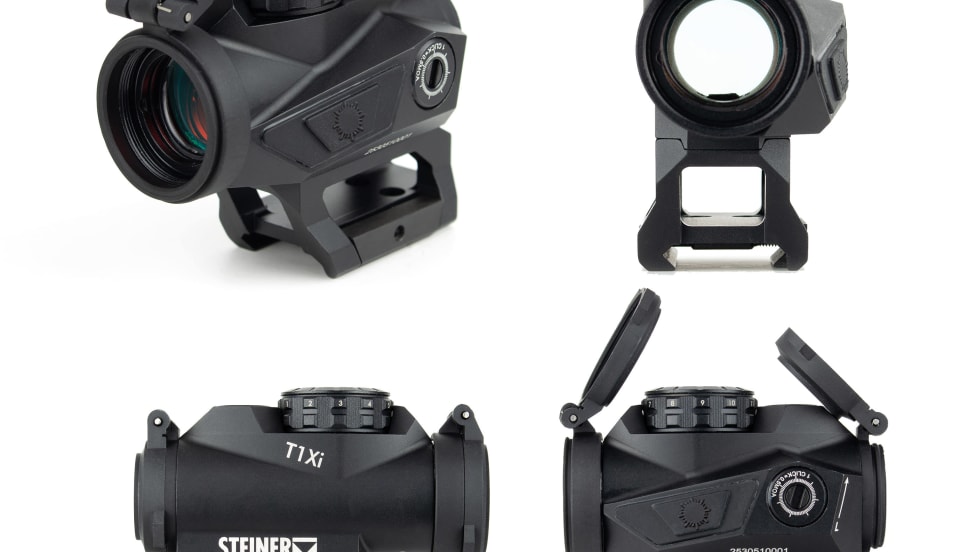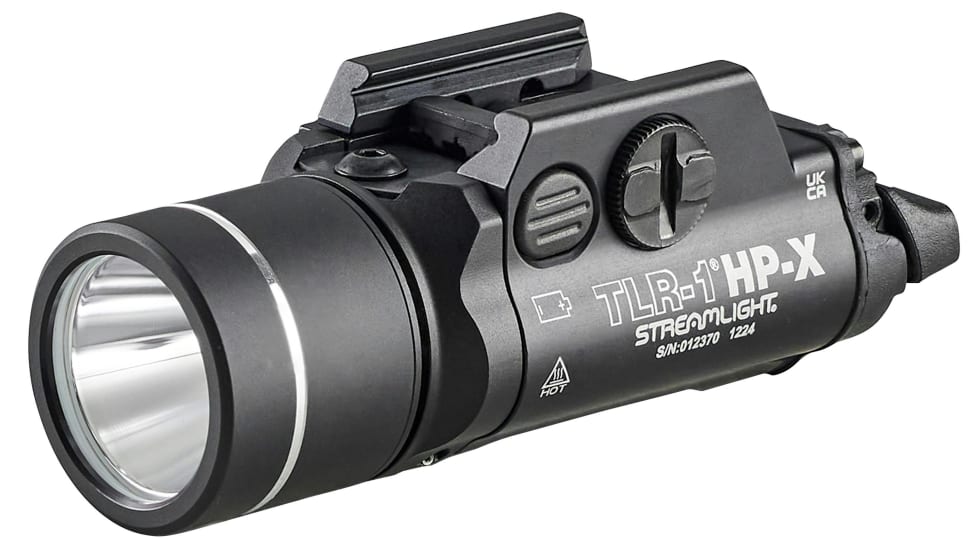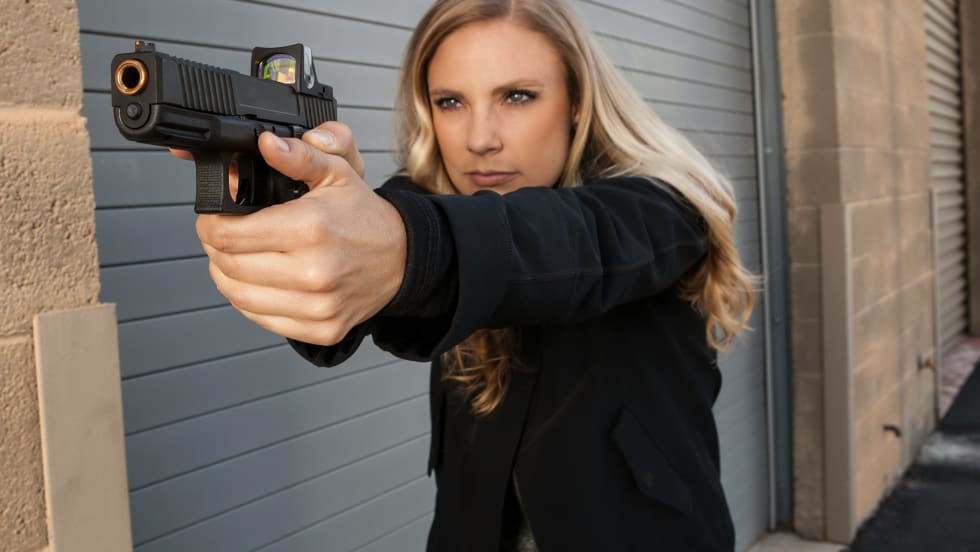When John M. Browning put the final period on the design of the original 1911 series pistol, he must surely have sat back and smiled. Its elegant simplicity, power, and performance raised the bar on auto pistol design. For a turn-of-the-century gunsmith, the development of the 1911 auto pistol was the equivalent of today's aeronautical engineers inventing warp drive.
Suddenly, other makers were scrambling as Colt began to build the big pistol. World War II showed the 1911 to be as tough as Browning said it was and the rest is, well...history.
It's doubtful Browning realized the impact his design was to have as he filed that last part on that first 1911. Since then, "Old Slabsides" has become the darling of American shooters. Just as Americans love to customize their cars, the 1911 is often the basic platform-the Model A Ford, if you will-of the handgunner. From custom sights to wildcat cartridges, the 1911 reigns supreme as the most versatile auto pistol in history.
Except One Thing
Time passed and the double-action auto pistol began to see the light of day. This begat an unwarranted knee-jerk fear of the "scary" single action, cocked-and-locked carry mode of the 1911. In the 1970s, Larry Seecamp developed a double-action conversion for the 1911, but the design never caught hold.
Enter a bold, Canadian company called Para-Ordnance. Established as a paintball gun manufacturer, it introduced a wide-body frame conversion for the 1911 pistol. Using an existing "upper" slide assembly, a shooter could convert a 1911 into a 15-shot .45 ACP. This was big news.
Much Ado, Indeed
Soon, Para's frames ruled the competition circuit, but company owner Ted Szabo was unhappy with some of the results of his frame being mated with sub-par uppers. In 1988 Para-Ordnance brought out its first complete pistol to the welcoming arms of the shooting and law enforcement fraternity.
Some early teething problems were overcome and Para continued to update products to meet the demands of the market. Then, in 1999, the company introduced its Light Double Action (LDA) series.
This abruptly brought the 1911 into the 21st Century and litigation-sensitive law enforcement administrators seemed more open to the idea of a 1911, if it had the LDA feature.
The first LDAs were high-capacity frames. Recently, when Para opted to build a single column frame, it surprised everyone by delivering one with an LDA action.
The Same Only Different
Our test gun, a stainless 7.45 LDA in .45 ACP, looks like a classic 1911 design, but with a twist. The trigger guard is standard-sized but the trigger is a top-pivoting, smooth-faced part that causes the eye to stop there and wonder what's up. Other parts look right at home, though, from the thumb and grip safety to the slide release.
The hammer on the LDA is skeletonized and is part of the secret of the design. Unlike some double-action-only (DAO) guns, the slide must be cycled for the double action to "pre-cock" and be ready for firing.
The trigger pull (a measured 6-pound average on our test gun) was smooth and amazingly light, with a distinct second-stage just prior to let-off. This enabled staged double-action shots where the shooter could pause just prior to the sear tripping, allowing accurate shooting.
Apparently, a "pre-loaded" hammer-device is hidden within the frame, just below the external, classic hammer. As the trigger is pulled, the hammer is moved to the rear, having only to overcome the resistance of a light hammer-return spring. This accounts for the light pull.
As the hammer reaches full stop, it engages the lower, pre-cocked piece and then, as the sear trips, is engaged and falls smartly home, firing the gun. Look on it like you would a pneumatic hammer. Pulling the trigger releases a pre-charged burst of energy that actually does the work. Very cool, indeed.
The thumb safety works as usual-up is safe, down is off. The hammer is always at rest and the grip safety not only prevents the gun from firing unless it's held correctly, it also locks the slide closed unless depressed fully.
The arched mainspring housing is black plastic and the rest of the gun appears to be constructed of a stainless alloy. The sights are classic three-dot designs, nicely shaped and highly visible.[PAGEBREAK]
All other controls function as usual and the LDA offers a firing pin safety like the Colt Series 80 pistols. Unless the trigger is depressed fully, the firing pin cannot go forward. This makes the gun safe against accidental discharge, even if dropped on the hammer spur.
Speaking of which, the rounded spur of the 7.45 LDA may interfere with some holster designs. Unlike a standard 1911 that allows cocked-and-locked carry, the Para runs with the hammer down and the safety on. This is an impossible proposition with a standard 1911 design, so holster makers were caught unprepared.
Most duty or concealment holsters for the 1911 design allow for cocked-and-locked (hammer back) carry, with the leather strap running between the hammer and the rear of the slide. These won't fit the LDA series. To complicate matters even more, some designs allow hammer-down, safety-off carry with standard 1911 pistols. Some of these holsters will push the safety down on the Para if the snap is engaged.
This can all be simplified two ways. You can buy the special law enforcement version of the LDA series, which has a spurless hammer. This allows carry in virtually any standard 1911 holster. Additionally, any open-topped holster without a thumbsnap works just fine.
Being a single stack, the Para holds seven rounds with one in the chamber. The magazine well is nicely beveled and aftermarket 1911 magazines should work fine. They should, however, be thoroughly tested before you rely on them for duty carry.
A Nice Package
All around, we'd rate the Para 7.45 LDA as being well made and nicely finished. The rosewood grip panels are checkered and of a rich color. While some parts are obvious castings, they seem uniformly finished with no obvious casting voids or pits.
The grip frame has what appears to be a soft, bead-blast finish while the slide flats are polished to about a 200 grit finish. An all-around handsome look, according to those who admired it at the range.
Ergonomics are first-rate and anyone familiar with a standard 1911 will feel right at home with the LDA. The safety being in the "on" position with the hammer down is disconcerting at first; but the natural, normal movement to engage or disengage the safety soon puts any butterflies to rest.
Shooting Impressions
We unfortunately had to limit our range testing to 15 yards due to a match in-progress at the 25-yard facility. Still, this gave us a good idea of the performance possible with the 7.45 LDA.
We restricted our shooting to Federal Personal Defense ammo and Black Hills 230 gr. .45 ACP ball. Approximately 200 rounds of ball were put through the gun to break it in. There were two stoppages, both failure to chamber. This is not unusual for a new auto, particularly with a stainless gun that hasn't been broken in.
Groups with the ball hovered around the 1.2- to 2-inch size, depending upon who was shooting. It was very easy to stage the trigger and pull the last bit of engagement off like a single-action shot. The 7.45 LDA test gun would probably deliver 2-inch groups at 25 yards if the shooter was careful.
Federal PDA (the 185 gr. load) performed well and shot exceptionally tight groups, with some less than 1 inch. The fully ramped barrel of the LDA undoubtedly contributed to the reliability experienced during the test firing.
Performance from a variety of holsters (Uncle Mike's new Kydex design and some leather from various makers) was predictably uniform. Holster makers have managed the 1911 design for almost 100 years, so they pretty much have all the bugs worked out these days.
Some fast double-action work revealed a potential training issue. It was easy to "short-stroke" the trigger by not allowing it to fully return after firing. During the return, there are two distinct clicks a shooter can feel and hear. A shooter has to train to allow the trigger to return fully, a full stroke forward, before beginning the return stroke. Otherwise, the trigger locks up and will not pull to the rear.
Having said that, the same thing can be done with a double-action Smith & Wesson revolver. So it's not the end of the world, just something to be aware of.
Final Thoughts
This is a sound design idea and cleverly instituted. The trigger-bar that activates the hammer assembly seems lightweight, however, and we'd like to run an endurance test on an LDA to see how it handles several thousand rounds. There are, apparently, LDA models in use with many thousands of rounds through them with few problems, but we would be most comfortable finding out for ourselves.
We'll put the test gun through a long-term test and report back at a later date.










